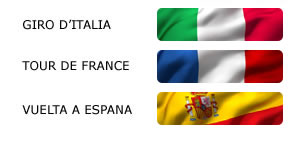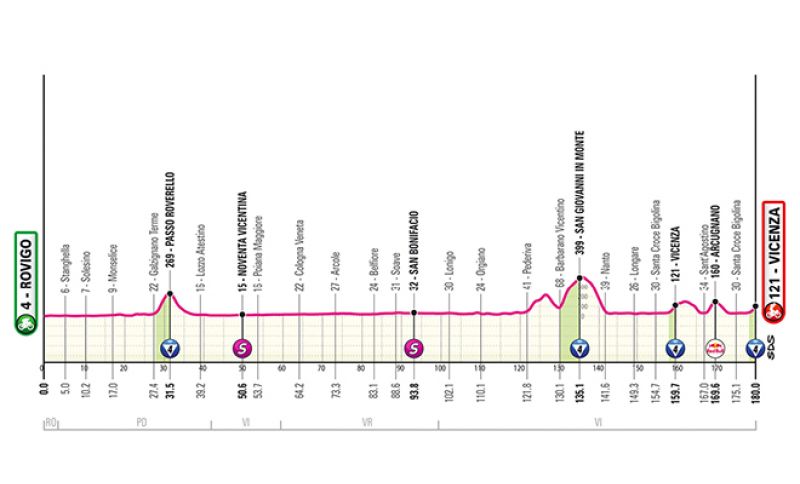

Stage number 13 takes the Giro d'Italia from Rovigo to Vicenza for 180 km with a completely flat altimetric development in the first part, except for the short Roverello pass climb in the Euganei Hills.
to follow the live coverage of the entire stage starting at 12:55 CLICK HERE
60 km from the finish, riders enter the Berici Mountains where they face continuous ups and downs and the San Giovanni in Monte climb. After a first pass at the finish line, they will ride a circuit of about 20 km with the Arcugnano climb (via Pilla) before the final at the Monte Berico Sanctuary. The last 3 km are completely flat until 1,200 m from the finish where the final steep section begins with the last km presenting an average gradient of 7.1% and peaks at the end of the climb at 12%.
THE TERRITORY. A ride on a carousel. This is how the thirteenth stage could begin, which will take riders from Rovigo to Vicenza, and it's no joke. The province of Rovigo, in fact, hosts one of the most important poles in the world for carousel construction. A little-known record that is celebrated in Bregantino at the Historical Carousel Museum, which offers a suggestive and engaging journey into the world of entertainment machines and traveling shows.
From one museum to another. In the center of Rovigo, the Museum of Great Rivers, located in a 17th-century former monastery, is the ideal place to discover the history and culture of the territory through archaeological, ethnographic, and cultural artifacts. The museum path, with dioramas and multimedia installations, offers an overview of over 3,500 years of history, from the Bronze Age to the Renaissance.
The fortified city of Monselice, dominated by the medieval castle, invites a first stop, as does Galzignano Terme shortly after, a relaxing gateway to the Euganei Hills Regional Park.
In Noventa Vicentina, riders pass by Villa Barbarigo (16th century), one of the wonderful Venetian Villas that characterize the regional territory and tell of an era of great splendor and great parties.
The rows accompanying the riders along the road testify to the entrance into a high wine-growing area: in Cologna Veneta, Arcole, and Belfiore, the wineries cradle of fine wines wink at those passing through. In Soave, a stop is mandatory. The Scaliger Castle and the powerful city walls (14th century) protect a charming village where it is pleasant to walk to immerse oneself in ancient times and sip that Soave DOC considered the best among Veneto white wines.
In Barbarano Vicentino, wineries compete with olive mills. The DOP extra virgin olive oil produced at the foot of the Berici Hills has a decisive taste, green color, and golden reflections. It's a coincidence, of course, but it ideally recalls Vicenza's goldsmith tradition, now very close. An excellence that can be touched, or at least admired, in the workshops of Vicenza's jewelers, proudly aware of their skill. With eyes still dazzled by such magnificence, one then goes to discover a city that is inevitably defined as a "jewel".
One first admires Piazza dei Signori, with the Basilica Palladiana and the Captain's Palace; then, reaches the enchanting Olympic Theater to then make a complete artistic full immersion in Corso Palladio where Palladio's constructions are numerous and diversified. One leaves the city following the course of the Bacchiglione river until the intersection of Via della Rotonda. And here it is, almost immediately, Villa Almerico Capra, considered one of Palladio's most successful works, also called La Rotonda for its particular shape with a vaulted dome and a circular central hall inscribed in a square.

Se sei giá nostro utente esegui il login altrimenti registrati.